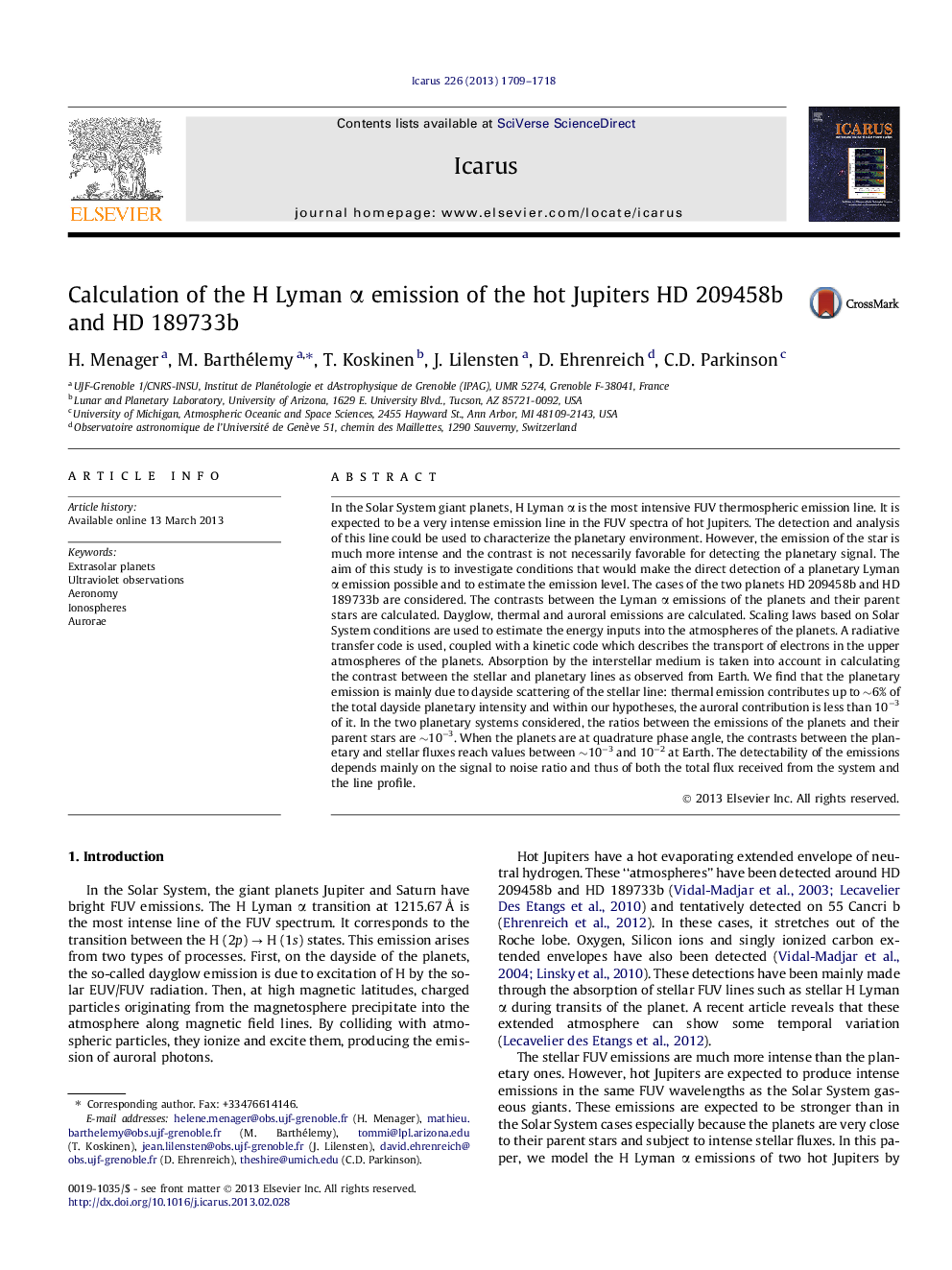| Article ID | Journal | Published Year | Pages | File Type |
|---|---|---|---|---|
| 10701413 | Icarus | 2013 | 10 Pages |
Abstract
In the Solar System giant planets, H Lyman α is the most intensive FUV thermospheric emission line. It is expected to be a very intense emission line in the FUV spectra of hot Jupiters. The detection and analysis of this line could be used to characterize the planetary environment. However, the emission of the star is much more intense and the contrast is not necessarily favorable for detecting the planetary signal. The aim of this study is to investigate conditions that would make the direct detection of a planetary Lyman α emission possible and to estimate the emission level. The cases of the two planets HD 209458b and HD 189733b are considered. The contrasts between the Lyman α emissions of the planets and their parent stars are calculated. Dayglow, thermal and auroral emissions are calculated. Scaling laws based on Solar System conditions are used to estimate the energy inputs into the atmospheres of the planets. A radiative transfer code is used, coupled with a kinetic code which describes the transport of electrons in the upper atmospheres of the planets. Absorption by the interstellar medium is taken into account in calculating the contrast between the stellar and planetary lines as observed from Earth. We find that the planetary emission is mainly due to dayside scattering of the stellar line: thermal emission contributes up to â¼6% of the total dayside planetary intensity and within our hypotheses, the auroral contribution is less than 10â3 of it. In the two planetary systems considered, the ratios between the emissions of the planets and their parent stars are â¼10â3. When the planets are at quadrature phase angle, the contrasts between the planetary and stellar fluxes reach values between â¼10â3 and 10â2 at Earth. The detectability of the emissions depends mainly on the signal to noise ratio and thus of both the total flux received from the system and the line profile.
Related Topics
Physical Sciences and Engineering
Earth and Planetary Sciences
Space and Planetary Science
Authors
H. Menager, M. Barthélemy, T. Koskinen, J. Lilensten, D. Ehrenreich, C.D. Parkinson,
